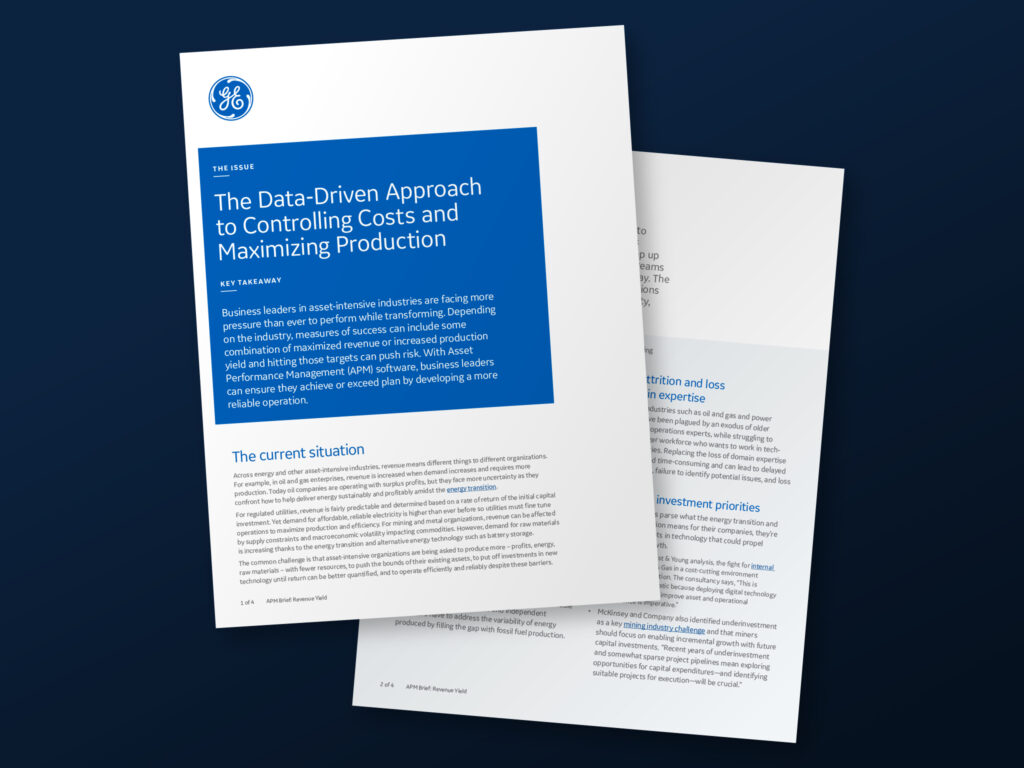
The Data-Driven Approach to Controlling Costs and Maximizing Production

Across energy and other asset-intensive industries, revenue means different things to different organizations. For example, in oil and gas enterprises, revenue is increased when demand increases and requires more production. Today oil companies are operating with surplus profits, but they face more uncertainty as they confront how to help deliver energy sustainably and profitably amidst the energy transition.
For regulated utilities, revenue is fairly predictable and determined based on a rate of return of the initial capital investment. Yet demand for affordable, reliable electricity is higher than ever before so utilities must fine tune operations to maximize production and efficiency. For mining and metal organizations, revenue can be affected by supply constraints and macroeconomic volatility impacting commodities. However, demand for raw materials is increasing thanks to the energy transition and alternative energy technology such as battery storage.
The common challenge is that asset-intensive organizations are being asked to produce more – profits, energy, raw materials – with fewer resources, to push the bounds of their existing assets, to put off investments in new technology until return can be better quantified, and to operate efficiently and reliably despite these barriers.